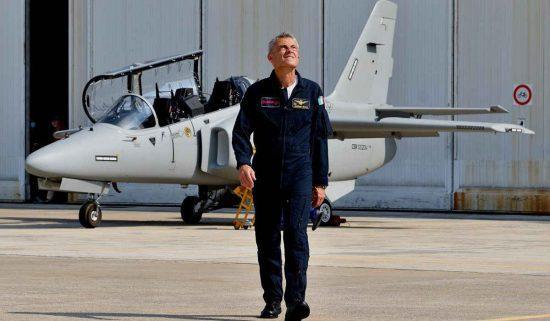Latest Thread
You are using an out of date browser. It may not display this or other websites correctly.
You should upgrade or use an alternative browser.
You should upgrade or use an alternative browser.
The Royal Canadian Air Force (RCAF), for the first time in about four years, trained with Boeing F/A-18 (CF-18/CF-188 in national service) Hornet fighters and an Airbus A310 (CC-150T in Canada service) Polaris aerial refuelling tanker in the high north region around Baffin Island.
From 18 to 20 January, the RCAF conducted training from Iqaluit, Nunavut with two CF-18s and one CC-150T, according to a service statement. The training saw CF-18s from Bagotville, Quebec, rendezvous with the CC-150T around Baffin Bay.
The aircraft successfully conducted air-to-air refuelling before continuing north for the remainder of the mission and conducting an Arctic patrol up the northeast side of Baffin Island, in the vicinity of Nanisivik, Nunavut. Major General Eric Kenny, commander of 1 Canadian Air Division, commander Canadian North American Aerospace Defense Command (NORAD) region, Joint Forces Air Component commander, told Janes on 26 January that he is trying to step up training using the CC-150T and CF-18s. He wants to use these aircraft in scenarios similar to what they would employ for his responsibility as the commander of the Canadian NORAD region where they can respond to air threats or incursions within, or around, the approaches of Canada.
Maj Gen Kenny told Janes on 28 January that the RCAF wants to exercise its crews’ ability to operate in challenging weather conditions year-round. The service also wants to exercise its crews’ mission-planning abilities to include things such as support requirements and maintenance that take on additional importance as the RCAF operates further from its main operating bases.
Royal Canadian Air Force resumes high Arctic training
The Royal Canadian Air Force (RCAF), for the first time in about four years, trained with Boeing F/A-18 (CF-18/CF-188 in national service) Hornet fighters and an Airbus...


From March 20 to 26, 2021, the North American Aerospace Defense Command (NORAD) will be conducting an arctic air defence exercise. Exercise AMALGAM DART will see a variety of military aircraft from the Royal Canadian Air Force and United States Air Force operating out of northern locations including Whitehorse, Y.T., Yellowknife, N.W.T, Edmonton, Alta., Goose Bay, N.L, Iqaluit, Nun, and Thule, Greenland.
While exercise flights will be conducted over sparsely populated Arctic areas and at high altitudes, where the public is not likely to hear or see them, there will be increased flight activity at Whitehorse, Yellowknife, Edmonton, 5 Wing, Goose Bay, N.L., and Iqaluit, Nunavut. This exercise is in no way related to the Government of Canada or United States’ response to COVID-19.
NORAD routinely conducts exercises using a variety of scenarios including airspace restriction violations, hijackings, and responses to unknown aircraft. NORAD carefully plans and closely controls all exercises. This air defence exercise provides us the opportunity to hone our skills as Canadian and U.S. forces operate together with our allies and partners in the Arctic.
During the exercise, a layered risk mitigation procedure will be employed which will limit contact with the local population to the greatest extent possible. Based on best practices recommended by Canadian health authorities and the Canadian Forces Surgeon General, participating military personnel will follow established mitigation protocols, (such as mask wearing, frequent cleaning of surfaces and other PPE use as appropriate).
Participating U.S. military personnel will require two negative COVID-19 test, separated by a minimum of 5 days, with the last test prior to arriving in Canada, and all exercise participants adhering to local, Territorial/Provincial, Federal and Canadian Armed Forces/Department of National Defence guidelines and regulations regarding public health measures for the duration of the AMALGAM DART.
For more than 60 years, NORAD has identified and intercepted potential air threats to North America through the execution of the command’s aerospace warning and aerospace control missions. NORAD also keeps watch over Canadian and U.S. internal waterways and maritime approaches under its maritime warning mission.

Leonardo Highlights M-345 Tutor II, Jet Trainer Competing for Canada FAcT
Leonardo's M-345 Tutor II basic trainer aircraft, which entered service with the Italian Air Force in December last year, is one of the cornerstones of the comp
 gbp.com.sg
gbp.com.sg
Leonardo’s M-345 Tutor II basic trainer aircraft, which entered service with the Italian Air Force in December last year, is one of the cornerstones of the company’s offer for the Canadian Future Aircrew Training (FAcT) program.
According to Test Pilot Quirino Bucci, Head of Test Pilot Training Programs for Leonardo’s Aircraft Division, the turbofan powered high efficiency trainer has a lifecycle cost comparable to those of heavy turboprop trainers, with better performance. The maintenance needed is minimal. The M-345, which is made chiefly using composite material, has a fatigue life of 15,000 flight hours.
“The aircraft is designed to ensure the maximum level of safety and comfort,” added Bucci. “The aircraft has ideal field of view for both the student pilot and the instructor. It includes two latest generation Martin Baker ejection seats, an on board oxygen generation system (OBOGS) and an environmental control system (ECS).”
Heir to a long tradition in jet trainers with the Aermacchi MB-326 and MB-339 – highly successful aircraft with over 1,000 units produced and that entered into service with air forces worldwide – the M-345 proposes the concept of a simple, efficient, high-performance basic-advanced jet trainer, fast and highly manoeuvrable, giving student pilots a true “jet experience” unmatched by competitors’ turboprop trainers.
Ideally suited for Canada’s entire training syllabus, the Aermacchi M-345 Tutor II is poised to provide comprehensive basic and advanced flight training for Royal Canadian Air Force student pilots that is scalable, innovative and customizable.
For performance, low operating costs and attractive looks, the M-345 Tutor II is also an ideal candidate to represent Canada in the livery of the Showbirds aerobatic team, potentially replacing the aging CT-114 Tutor still currently in service.
The first units of the M-345 Tutor II entered service at the Italian Air Force 61st Wing in Galatina (Lecce) in December last year.

Airbus has been qualified by the Canadian government as a bidder for the Strategic Tanker Transport Capability (STTC) project. It now moves to the next stage of the call for tender, with a draft request for proposal (RFP) expected in Q3 2021.
The STTC program looks to replace the Royal Canadian Air Force (RCAF) Airbus A310MRTT (CC-150 Polaris) tanker fleet with a multirole aircraft capable of conducting a wide range of missions and able to operate in NATO and NORAD missions; ranging from air-to-air refueling operations to strategic government of Canada transport and aeromedical evacuation.
The A330MRTT is the 21st century benchmark for new generation tanker/transport aircraft, combat-proven and with unique multi-role capabilities. It has been ordered by Australia (as launch customer), France, NATO, Saudi Arabia, Singapore, South Korea, the United Arab Emirates and the UK.
RIP to Capt. Jenn Casey.
This video goes through lot of details of ejection seat procedure and the limitations of old ejection seat systems:
===================================================================================================================
Breakdown and analysis of the May 17,2020 fatal mishap involving a Royal Canadian Air Force Snowbird Tutor aircraft, tragically taking the life of Captain Jenn Casey.
This video goes through lot of details of ejection seat procedure and the limitations of old ejection seat systems:
===================================================================================================================
Breakdown and analysis of the May 17,2020 fatal mishap involving a Royal Canadian Air Force Snowbird Tutor aircraft, tragically taking the life of Captain Jenn Casey.




